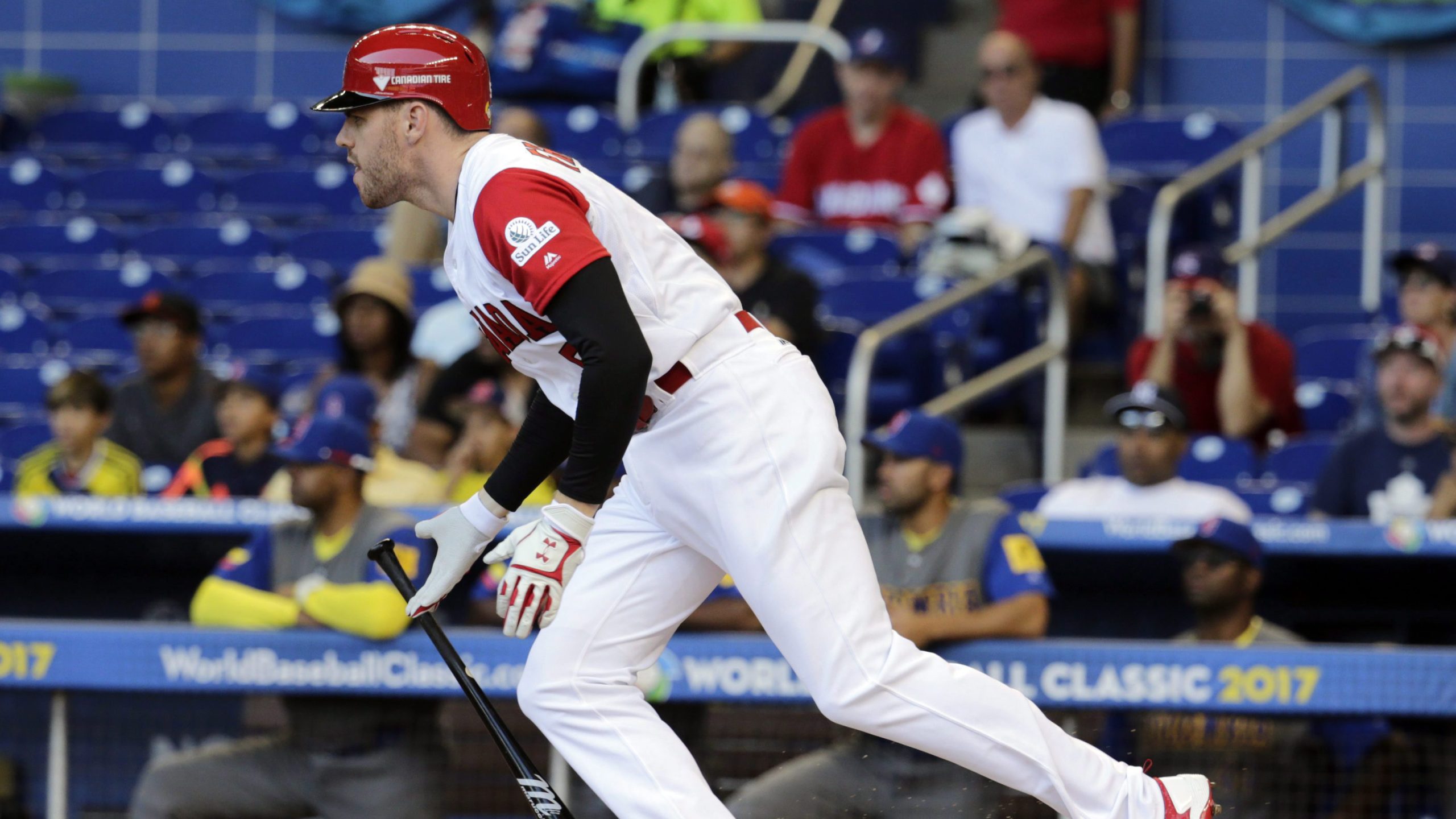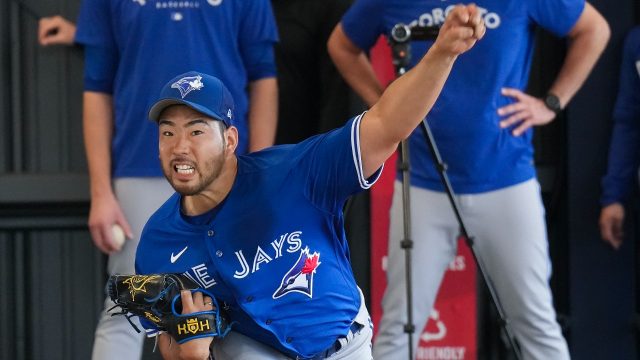
DUNEDIN, Fla. – After the Blue Jays added Daulton Varsho, Brandon Belt and Kevin Kiermaier to the lineup over the winter, there was plenty of discussion about one of their shared attributes. As left-handed hitters, they promised to balance out a lineup that has tilted heavily to the right for years.
But quietly, the three newcomers share another trait that deserves attention: they like to bunt for hits.
Varsho prefers push bunts, and he’s good at them, with an MLB-leading nine last year. Kiermaier hasn’t bunted as much lately, but with his hip fully healthy, he’s planning to add to his career total of 16. And although Belt may be a 34-year-old first baseman coming off knee surgery, that doesn’t dampen his enthusiasm for a well-timed bunt.
After all, if the third baseman is well off the foul line, and you’re confident you can make contact, why not?
“You have the best odds of getting on base if you can lay that bunt down the third-base line,” Belt said. “It’s just higher than any other thing you can do at the plate. So, for me, if the goal was to get on base, why wouldn’t I do that? Obviously, I’d like to drive the ball and get extra base hits. But in that moment, if it’s the right time to do it, why not take advantage of that? Get on base and set the team up.”
Ultimately, it’s the same outcome as a line-drive single up the middle.
“Exactly,” Belt said. “And in this lineup, you’ve got guys all over the place that can drive you in.”
As a team, the Blue Jays ranked 28th among the 30 MLB teams with just four bunt hits last year. In 2023, that trend’s poised to change thanks to their new additions. To be clear: the Blue Jays are still a team built around power bats, and we’re talking about going for hits here, not sacrifices. But even if it’s more happy coincidence than grand off-season strategy, the end result promises to be interesting: look out for more bunt hit attempts in the year ahead.
“If it’s part of their game, for sure,” manager John Schneider said. “If you can do it and you’re good at it? If you can get on the bases and you’re an elite baserunner like (Varsho and Kiermaier) and the situation calls for it, I’m all for it.”
Given that upcoming rule changes will keep two infielders on either side of second base, it’s possible Belt will get fewer chances to bunt now than he has in years past. That will inform his decision making, along with who’s pitching, what kind of pitches they prefer and who’s playing defence.
Sinkers are harder to square up than four-seamers, for instance, but there are no rigid rules for Belt, who likes to operate by feel. He’s even bunted for a hit with two strikes before, partly because he was slumping and partly because it’s unexpected. Although that’s not likely to happen again, the fact remains: Belt likes to bunt if it means getting on base.
“If they want to put two people over towards the shortstop area, then I’d still do it,” he said. “As long as I can get the third baseman away from third base, I think I can do that. But it just remains to be seen what how they’re going to play that. I just I don’t know.”
Where Belt prefers push bunts to third base, Varsho’s become an expert at drag bunts that create havoc up the first-base line. Like Belt, he likes to assess the defence while also relying on instinct. And while his nine bunt hits last year were quantifiably valuable, he believes there are further benefits once opposing infielders start anticipating bunts.
“It allows me to expand the field,” he said. “You start seeing guys having to creep up a little bit more and having to make quicker decisions on, say, ground balls that I hit at them. So, I think it opens up some smaller holes. Everything helps.”
Varsho’s locker is beside Belt’s at the Blue Jays’ spring training facility, and the outfielder said he’s asked his older teammate for tips. Like Belt, Varsho’s happy to use small ball to generate offence when his swing isn’t quite right.
“It’s another way to try to get on when you’re not feeling good,” Varsho said.
As for Kiermaier, he hasn’t successfully bunted for a hit since 2018, but part of that has to do with hip issues that have since healed. He now works on his bunting regularly with first-base coach Mark Budzinski in the hopes of sneaking in some more hits in 2023. His rule of thumb? If he can smell the third baseman’s cologne, he’ll swing away. Otherwise, he’ll consider bunting.
“It can open up so many different things,” Kiermaier said. “It’s an absolute weapon when I do it.”
The likely No. 9 hitter in Toronto’s lineup, he could make life difficult for opposing pitchers by mixing a bunt single or two into the mix.
“Even a fake bunt can do certain things,” Kiermaier said. “I like to catch guys by surprise, but it’s definitely something I want to work into my game more. If I can get 5-10 hits this year, that’s huge.”
In the end, the Blue Jays’ power bats can likely carry them further than their bunting prowess ever could. At the same time, there’s no reason both elements can’t feature within the 2023 offence. It’ll be a different look – most important, it has the potential to work.







